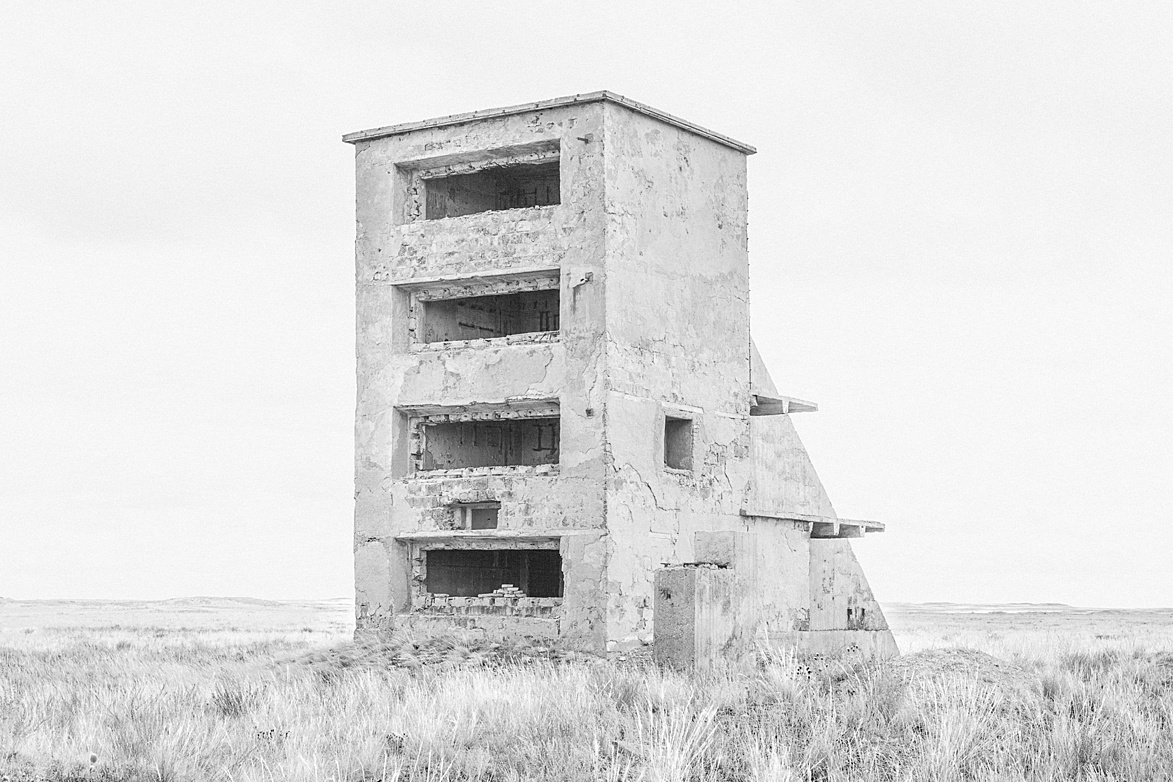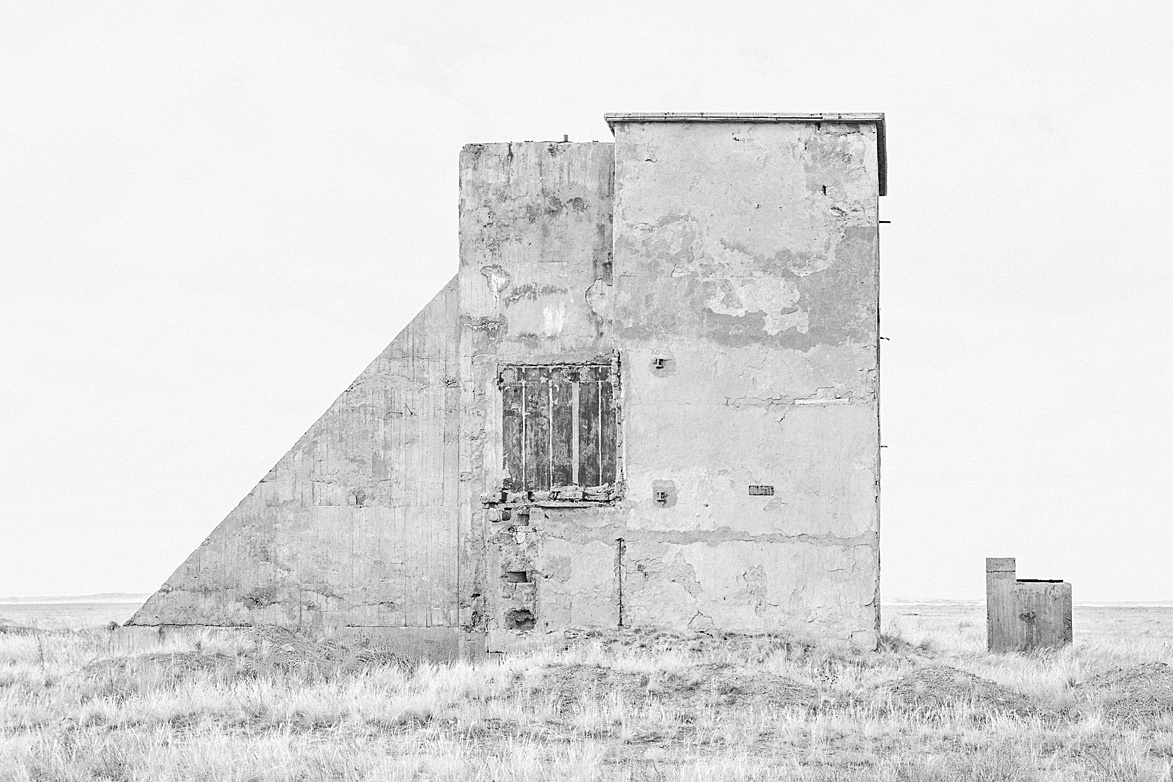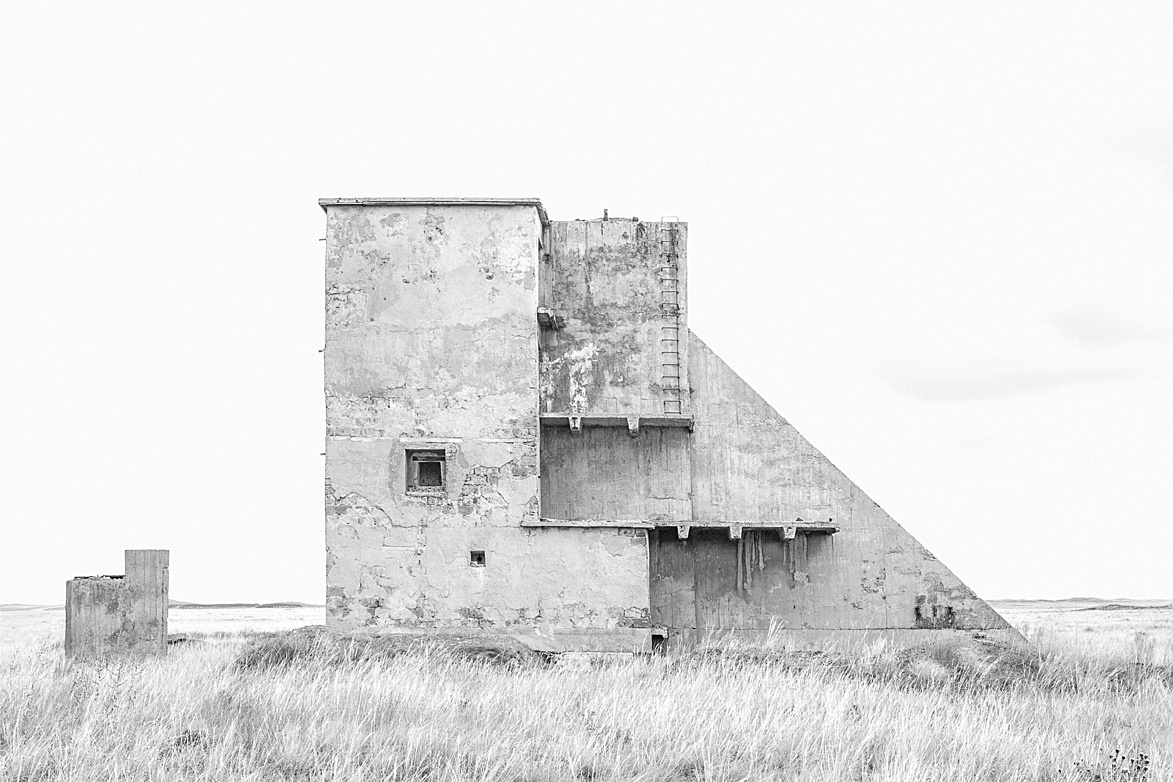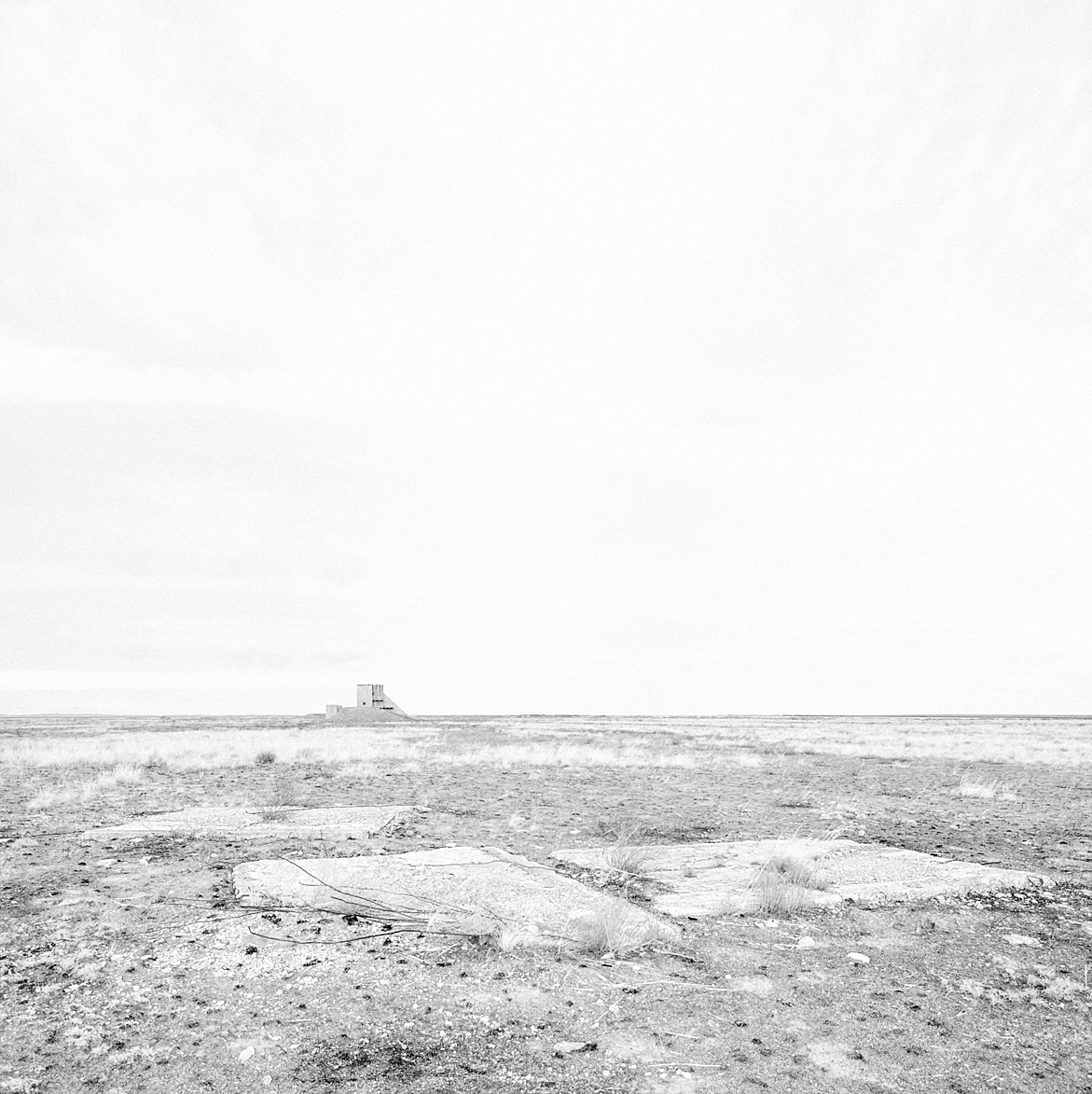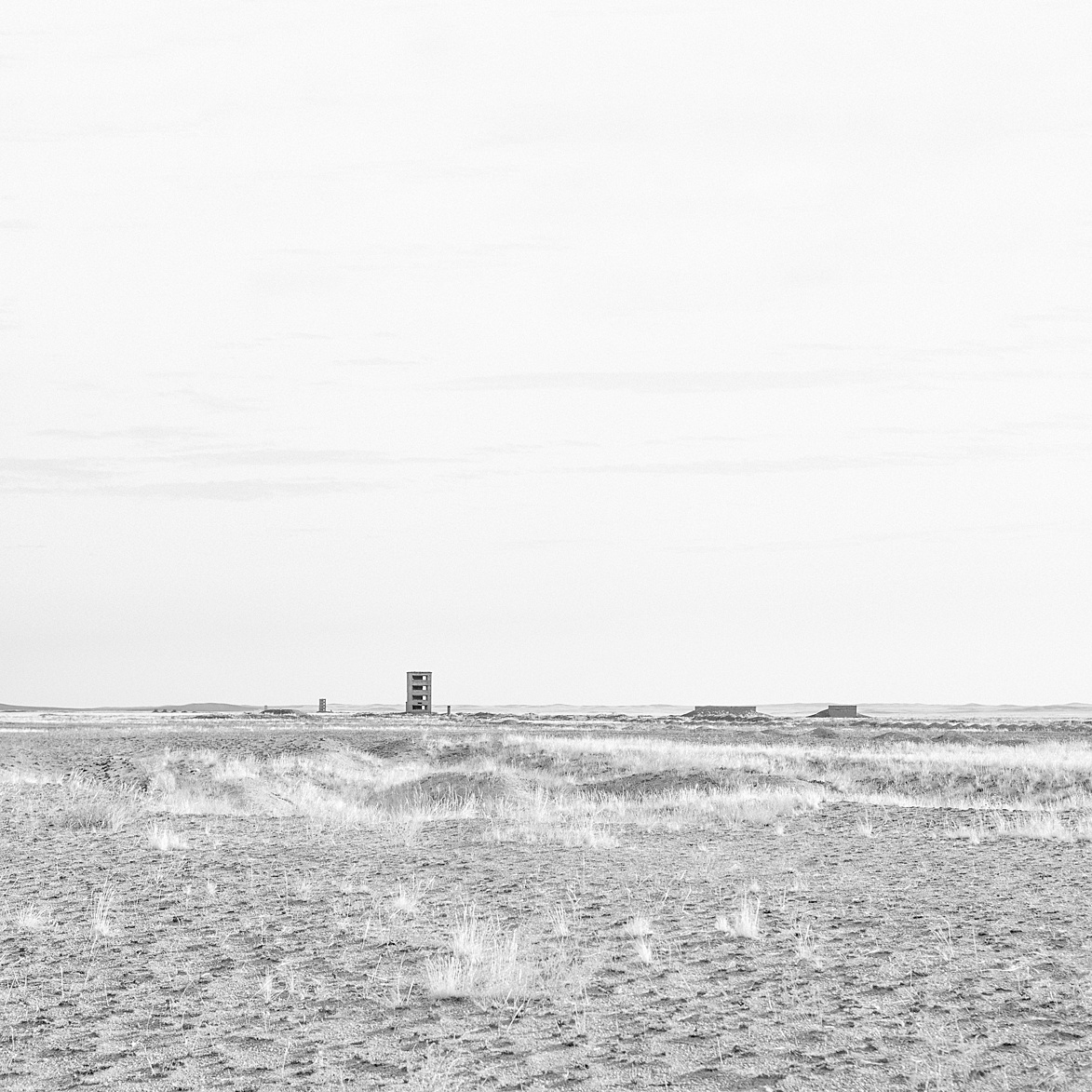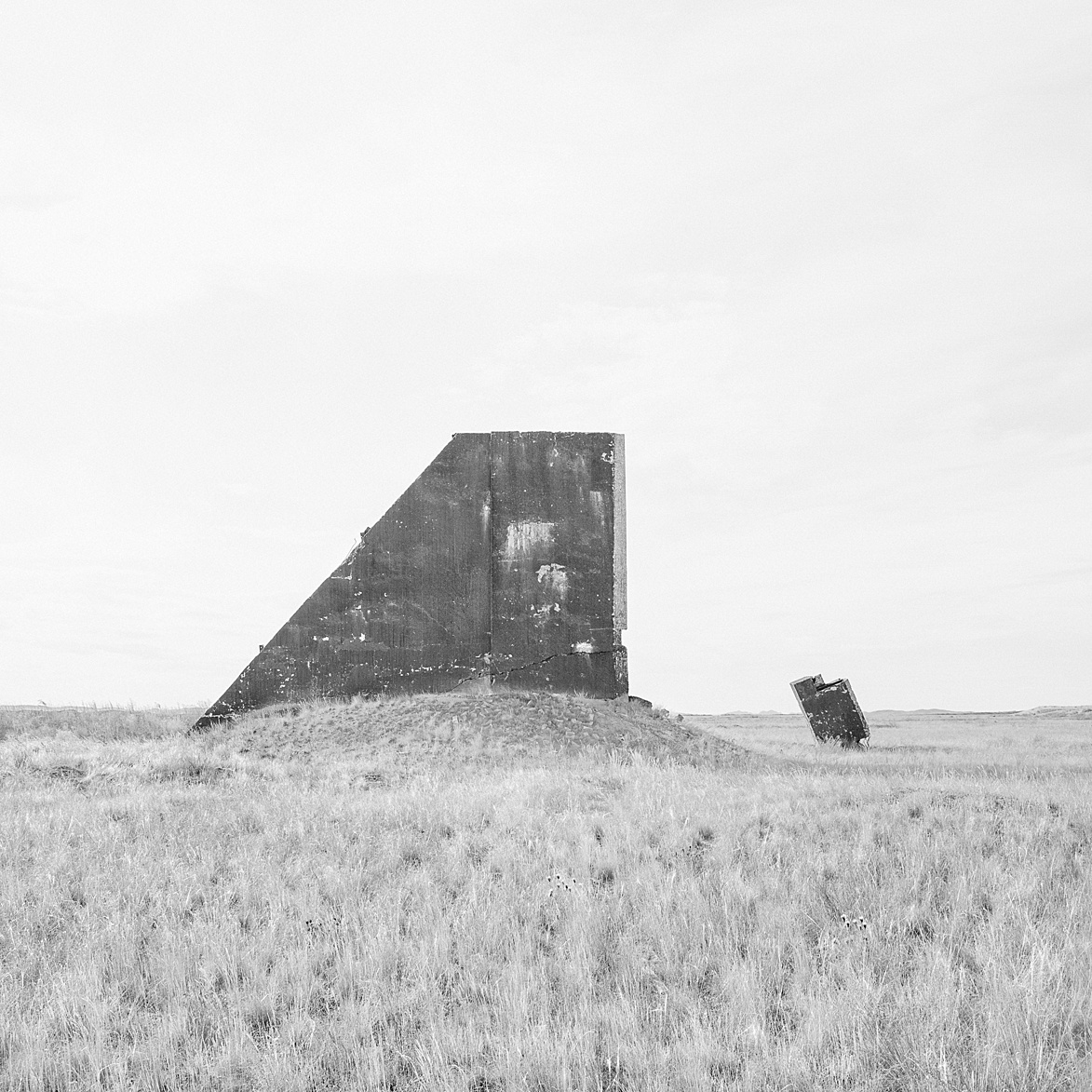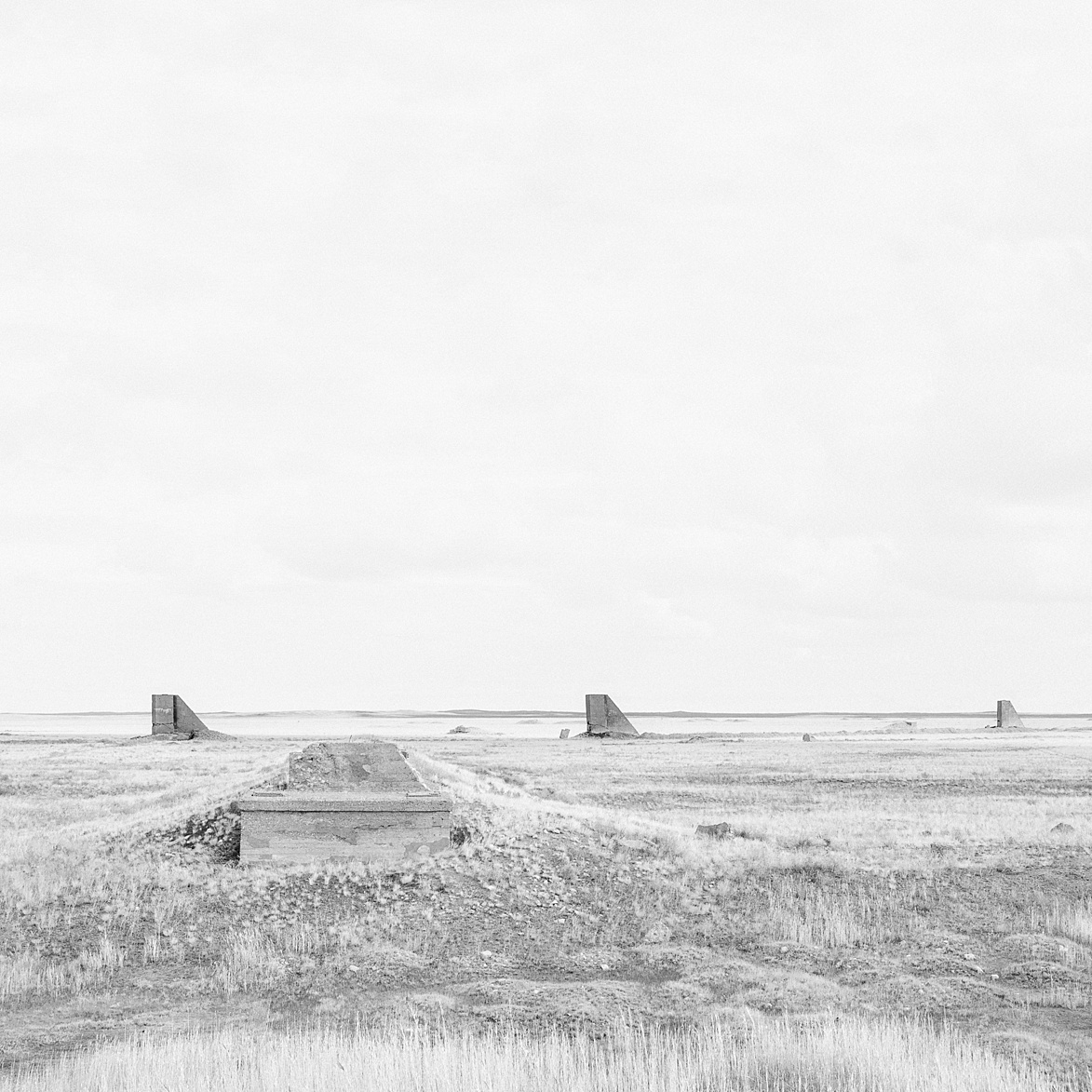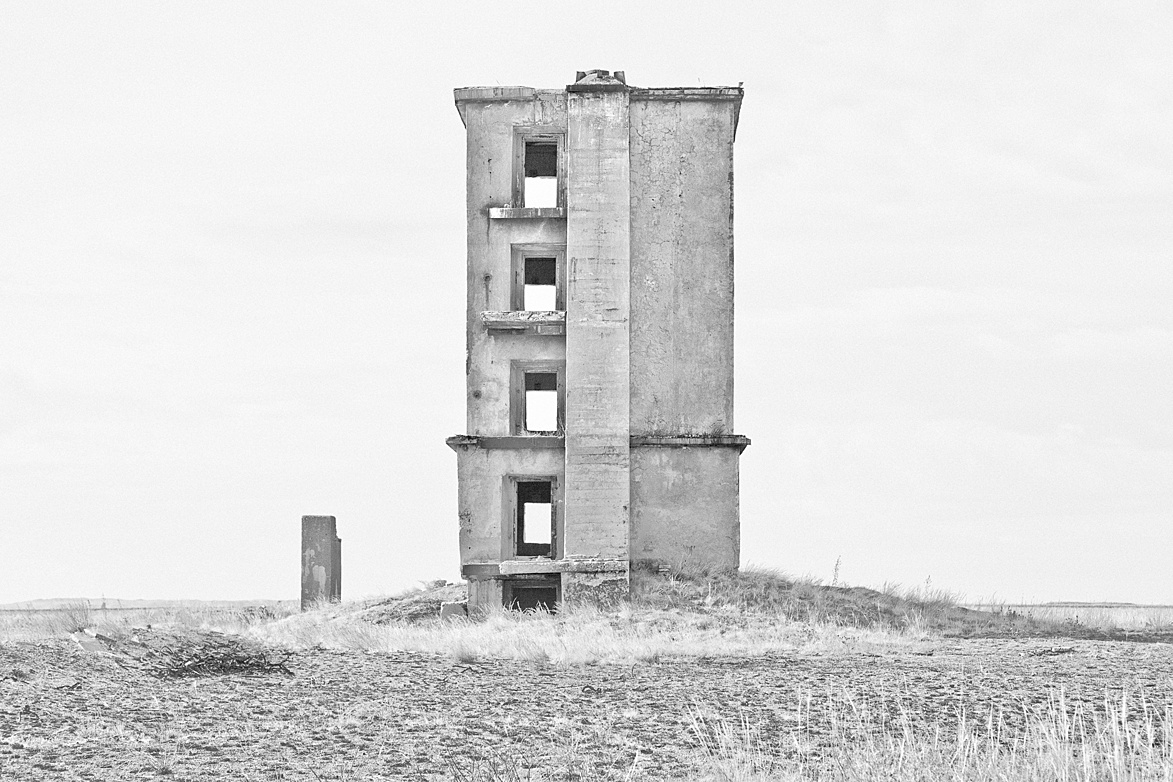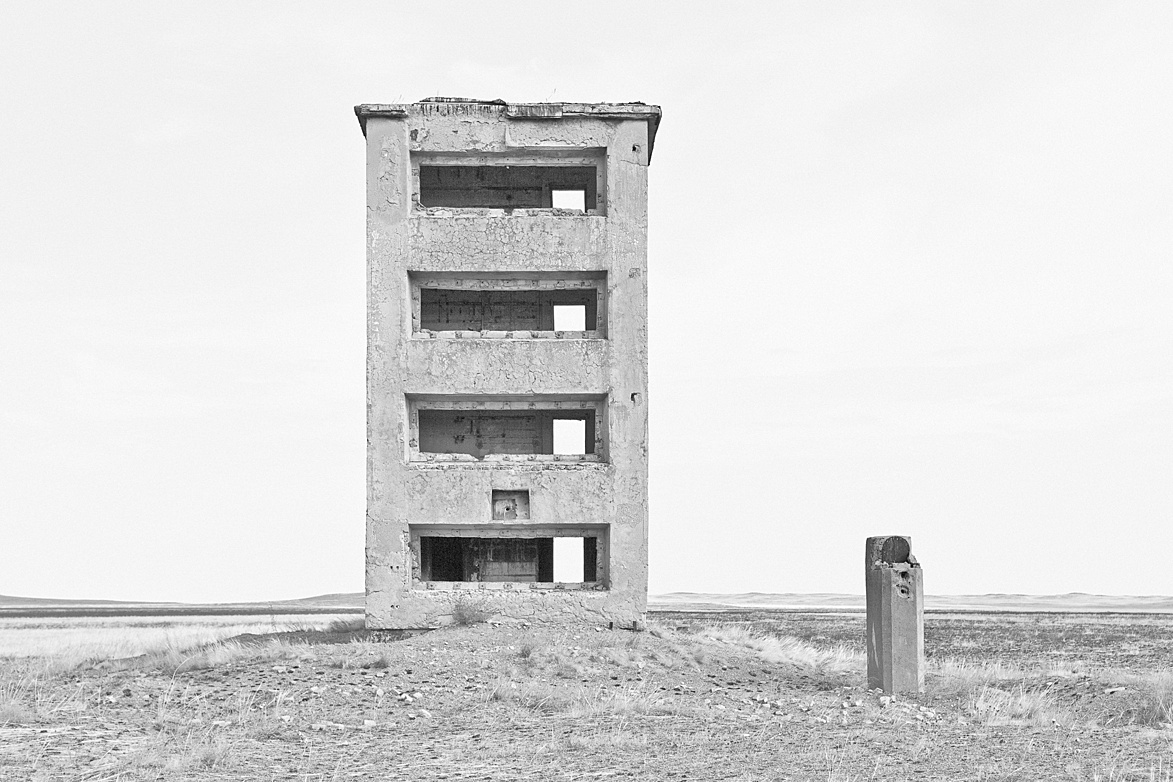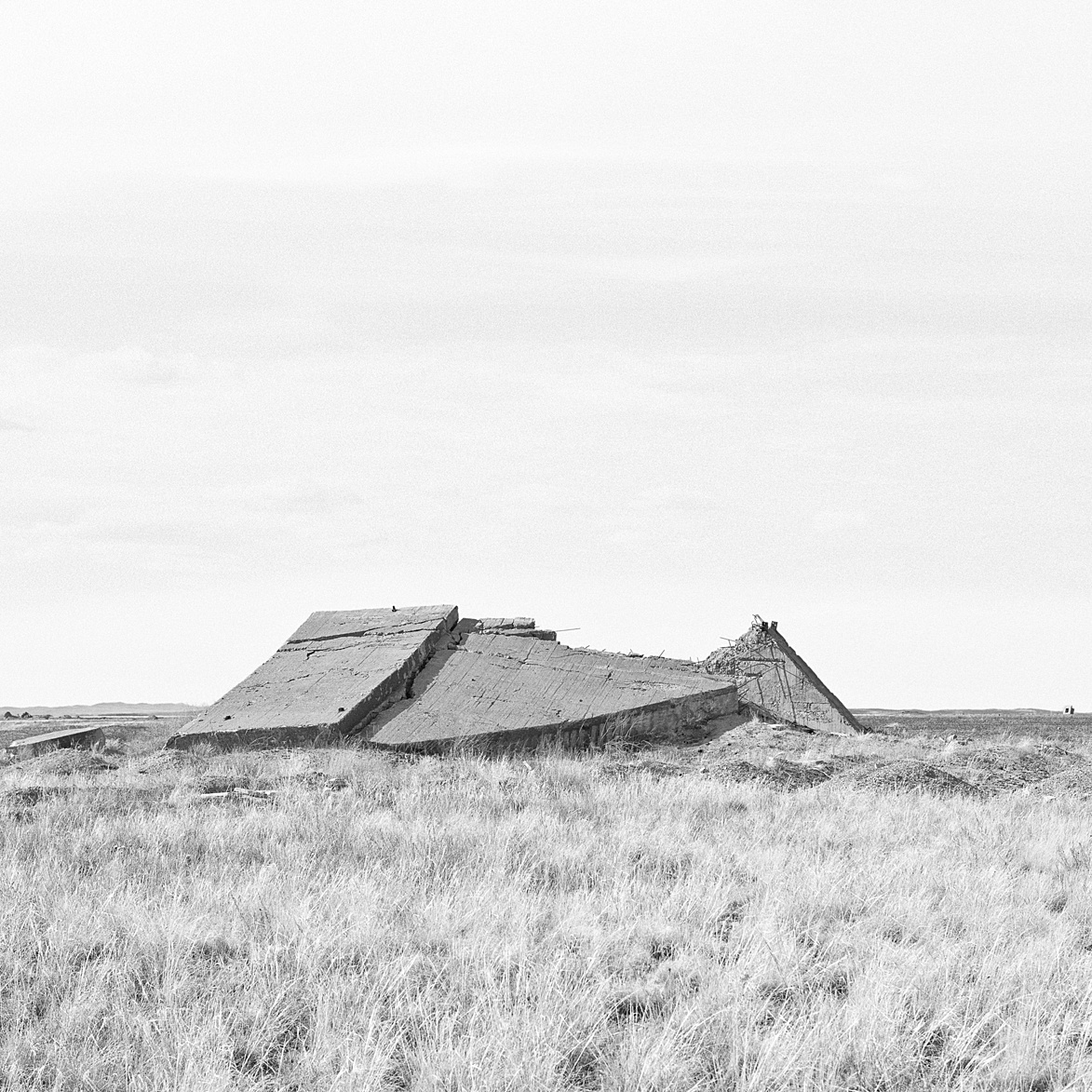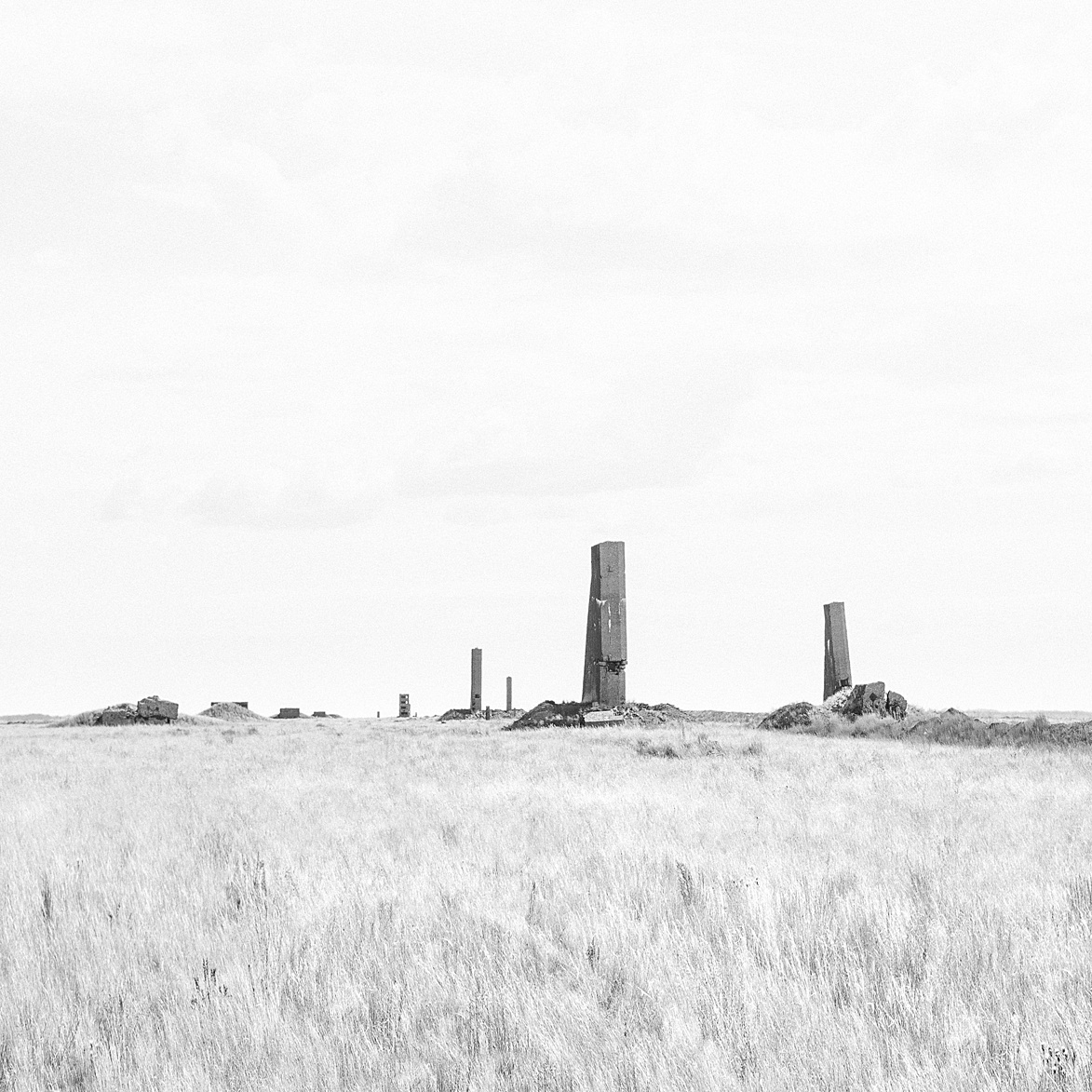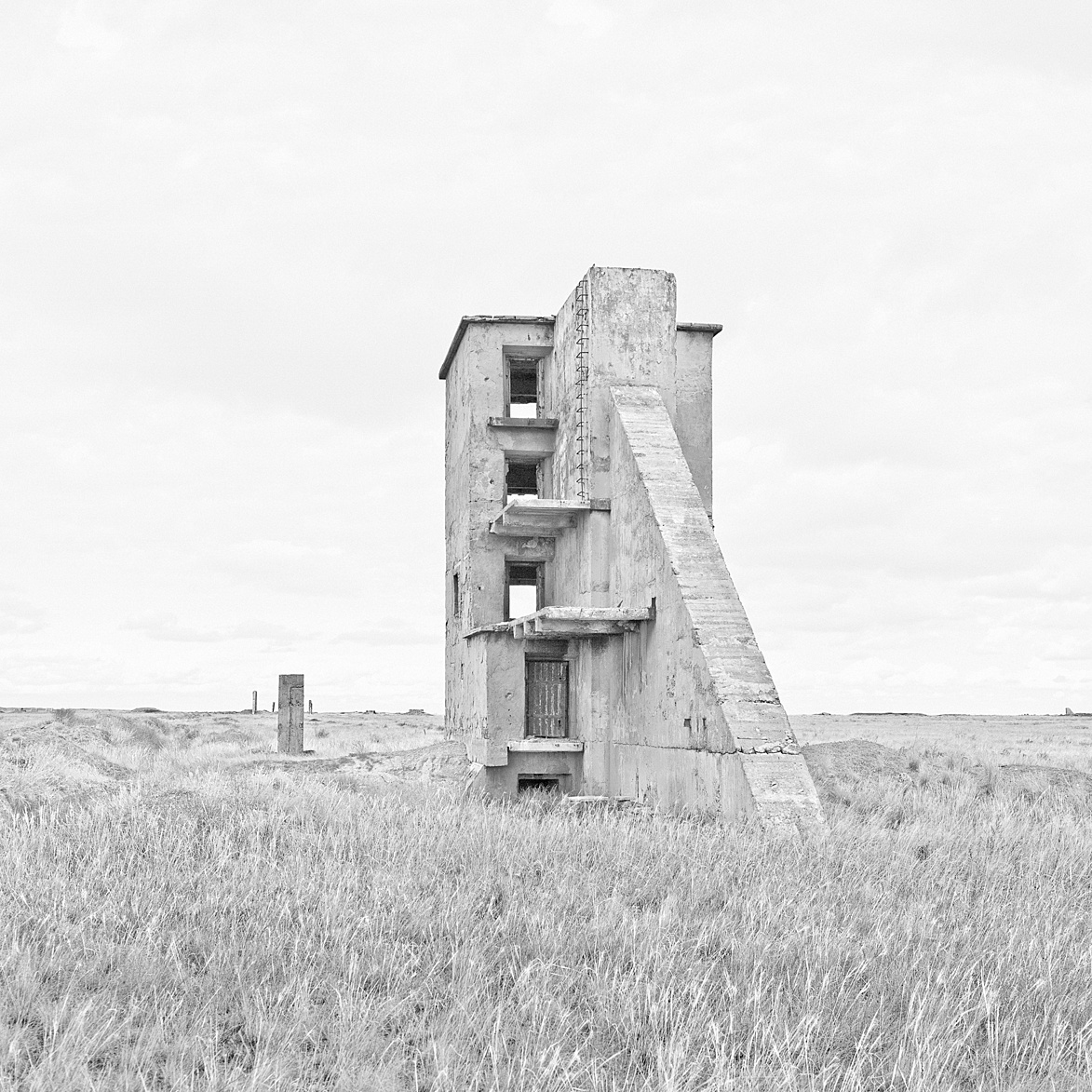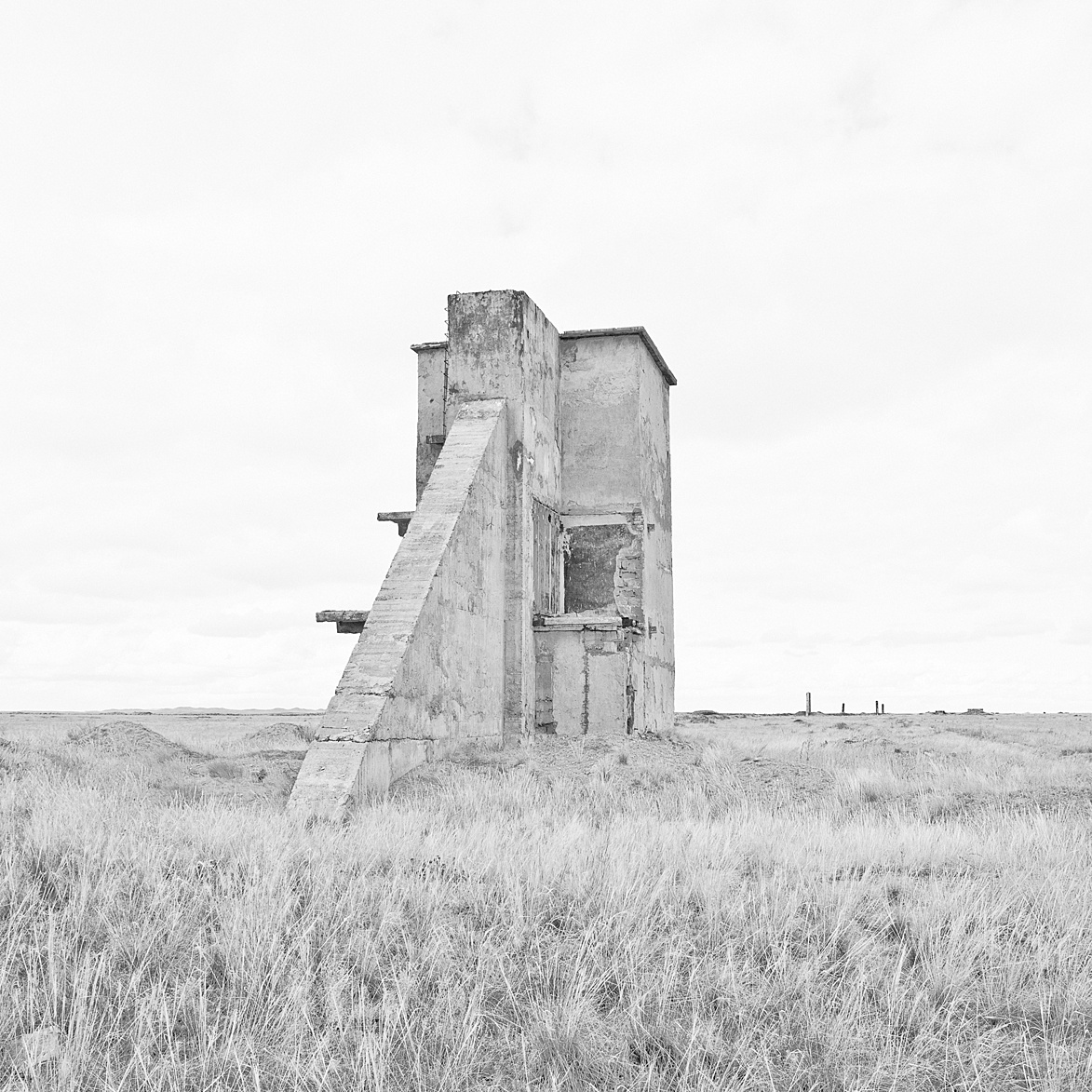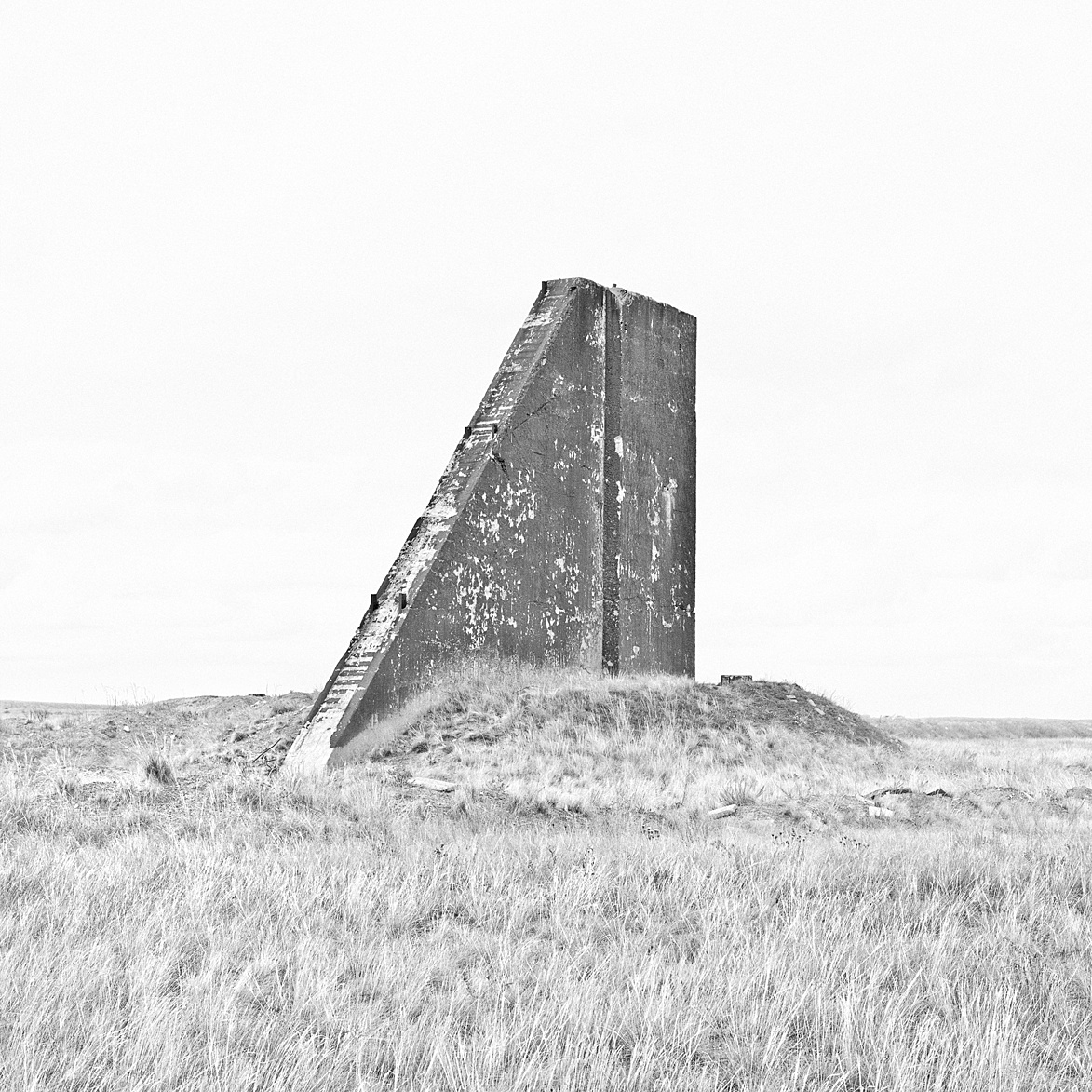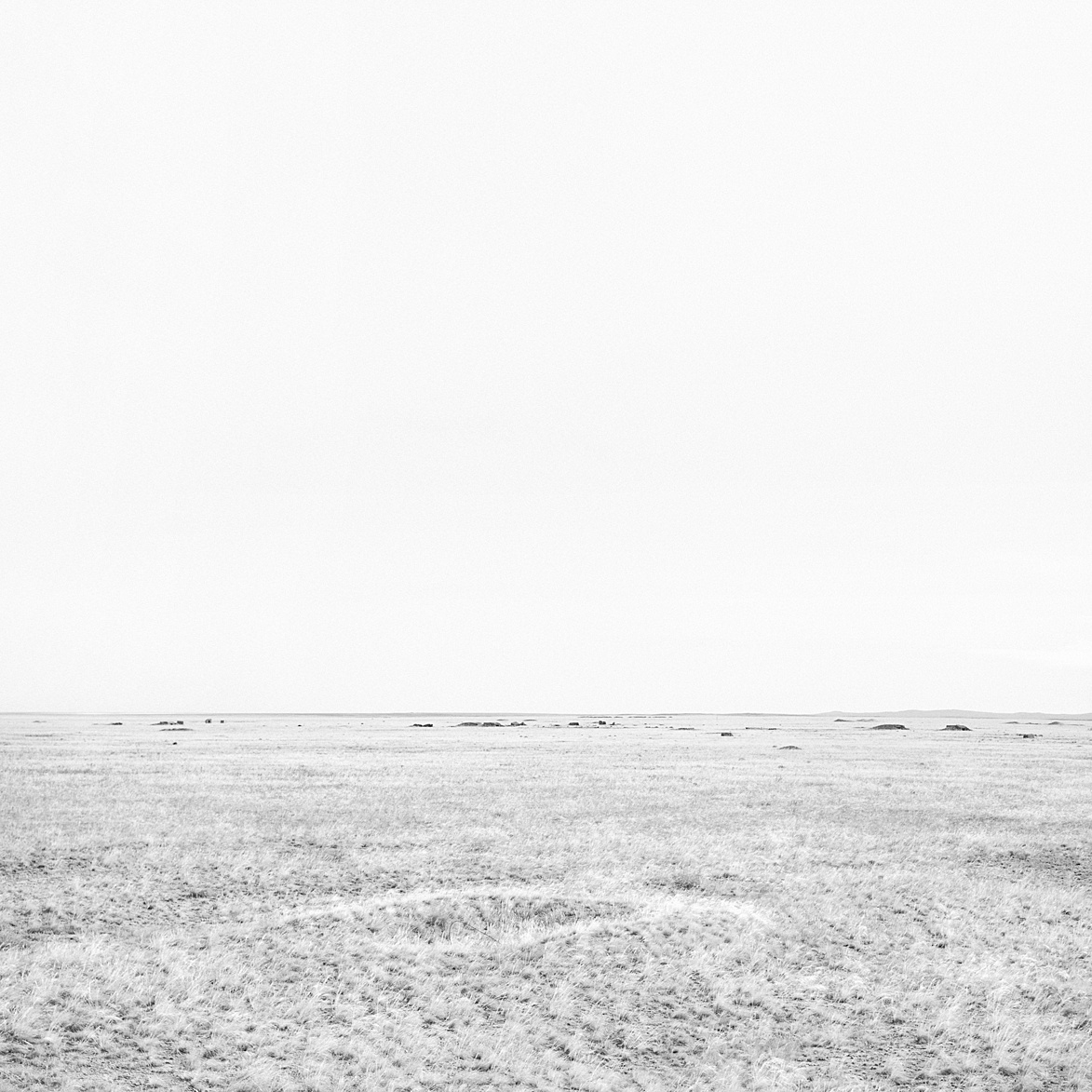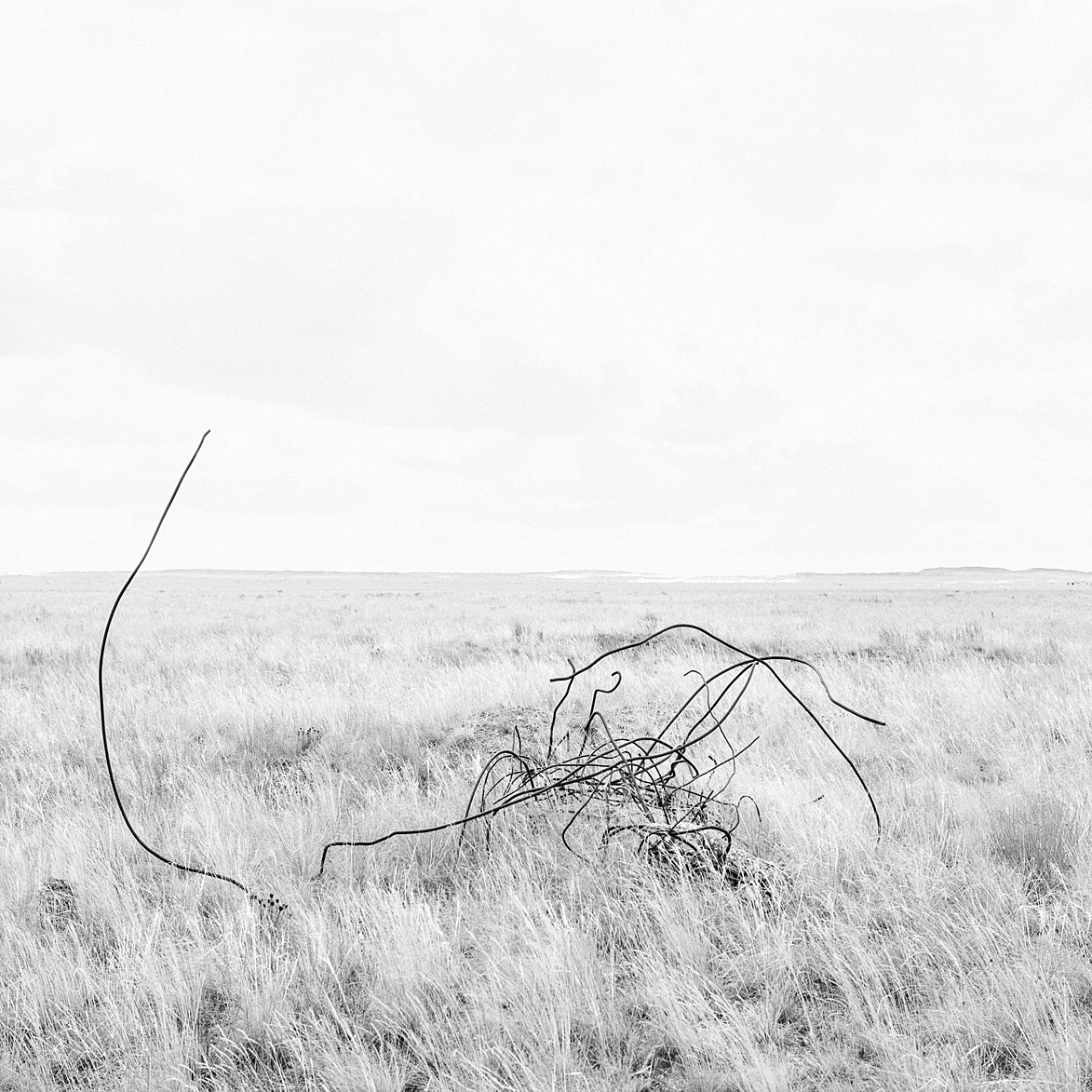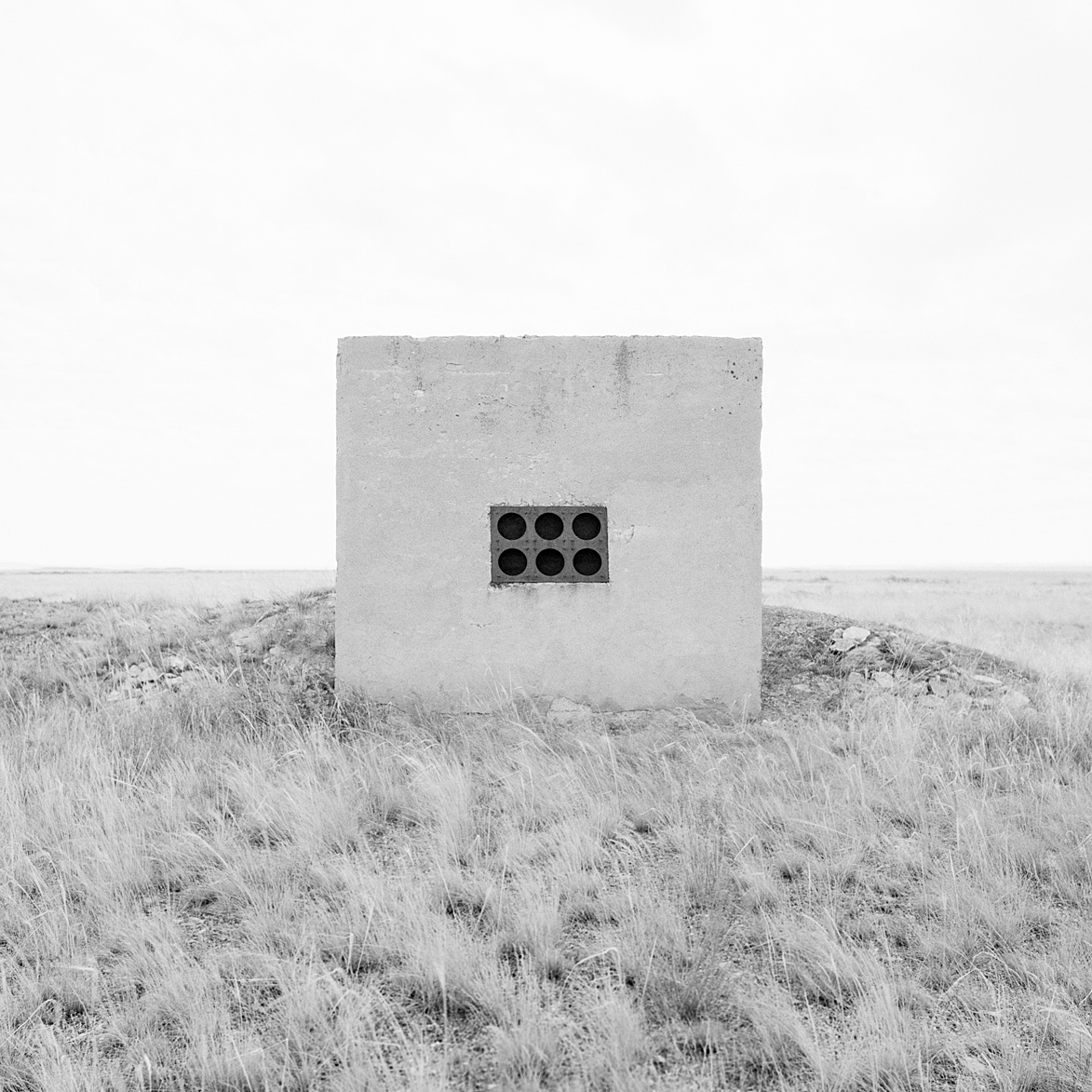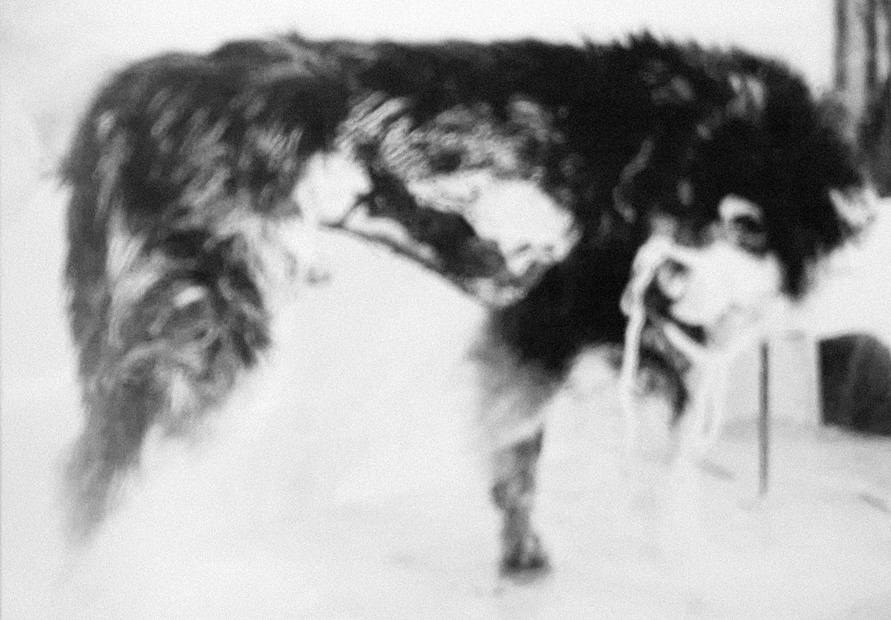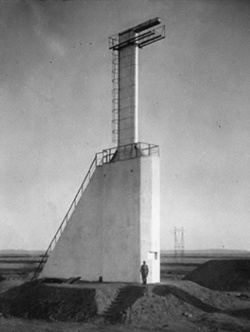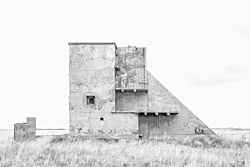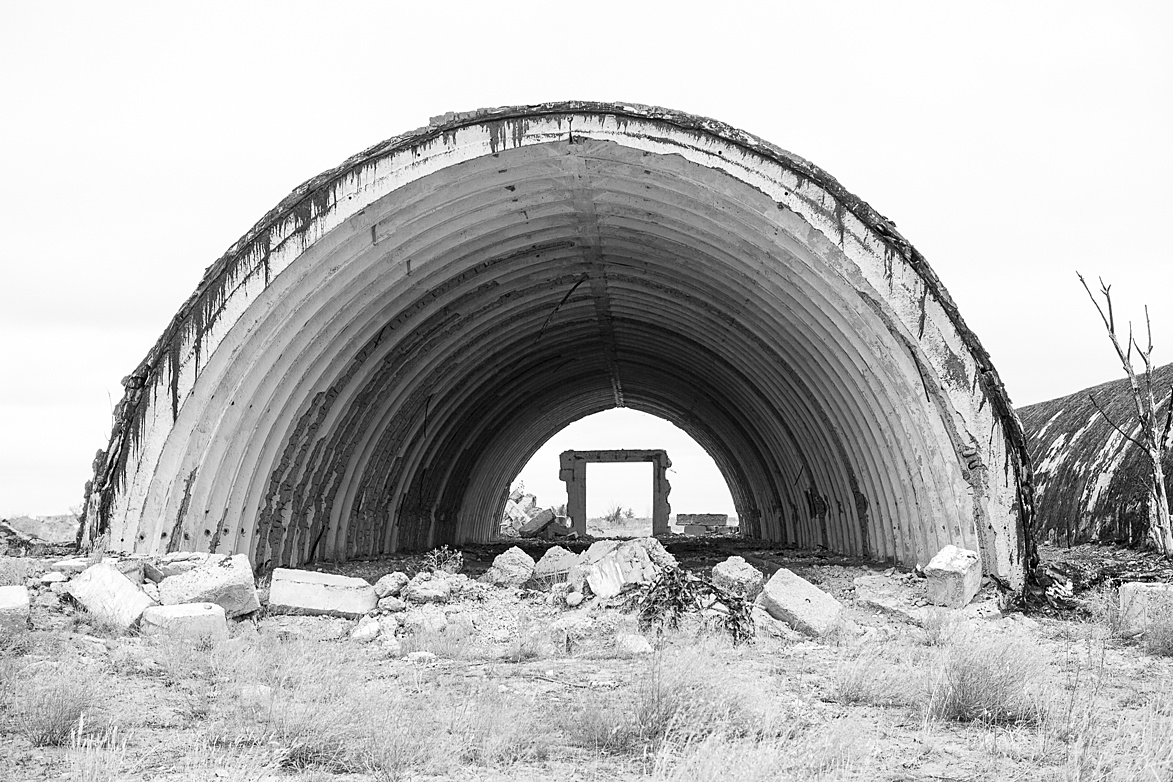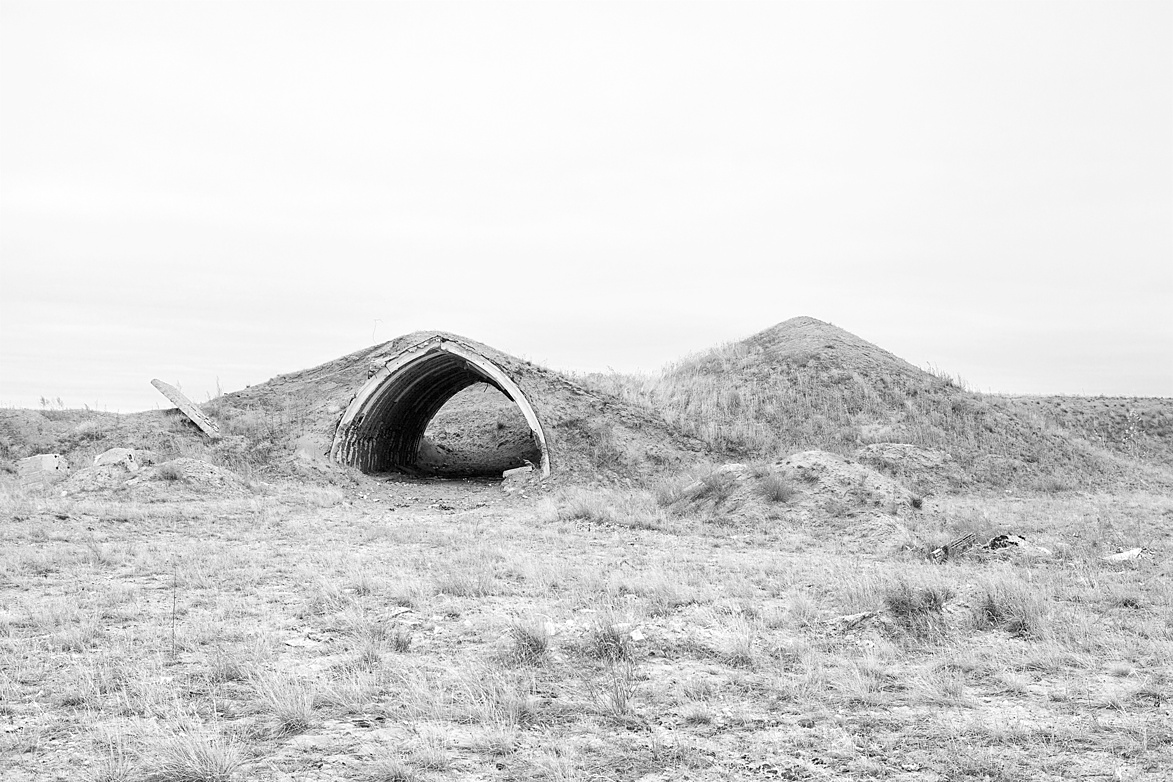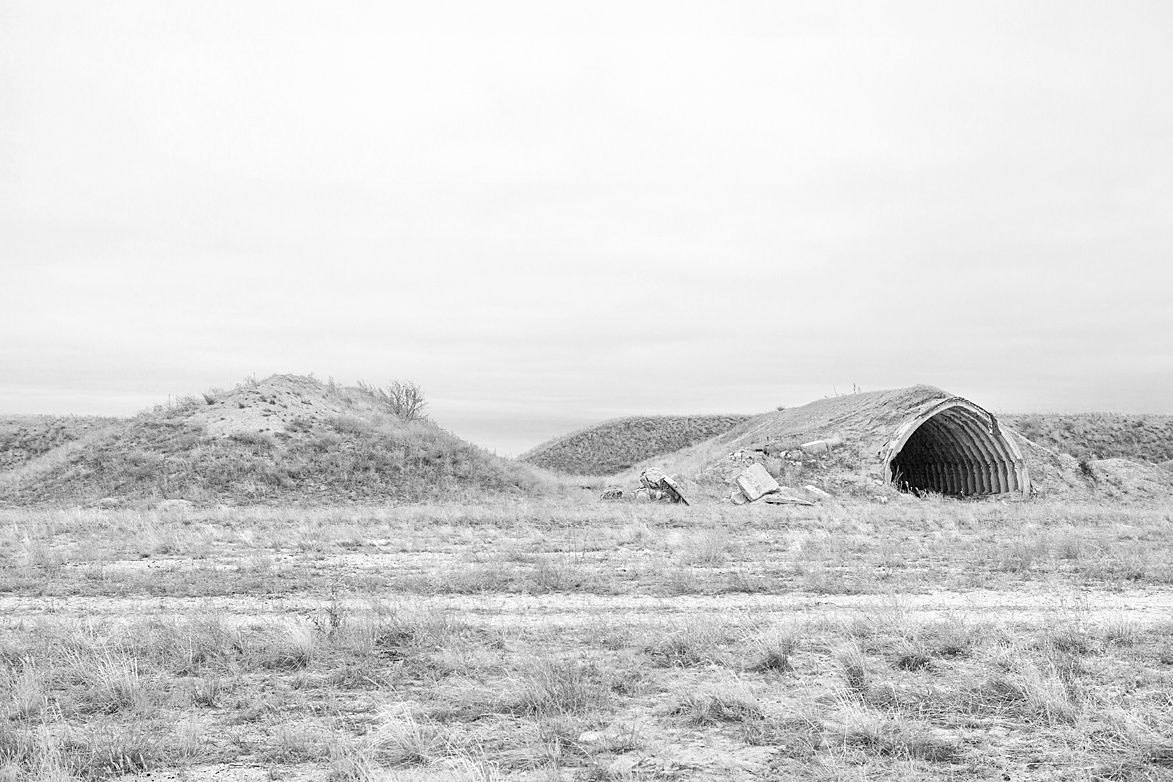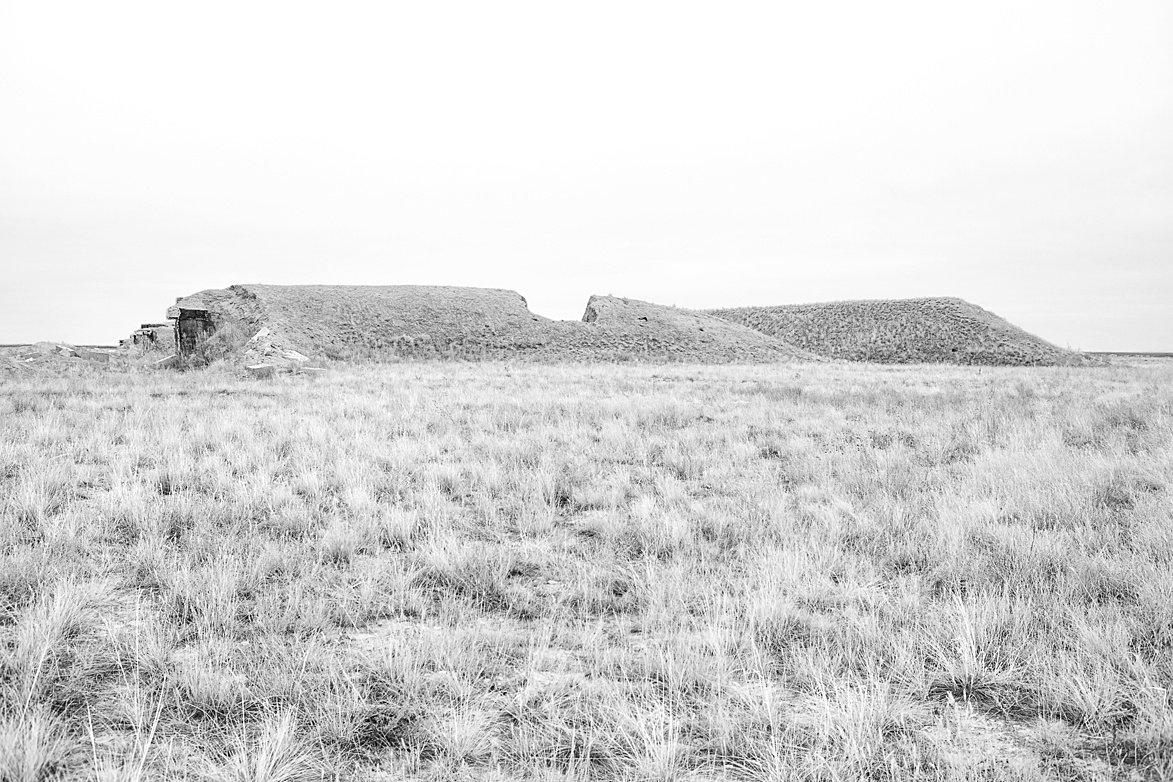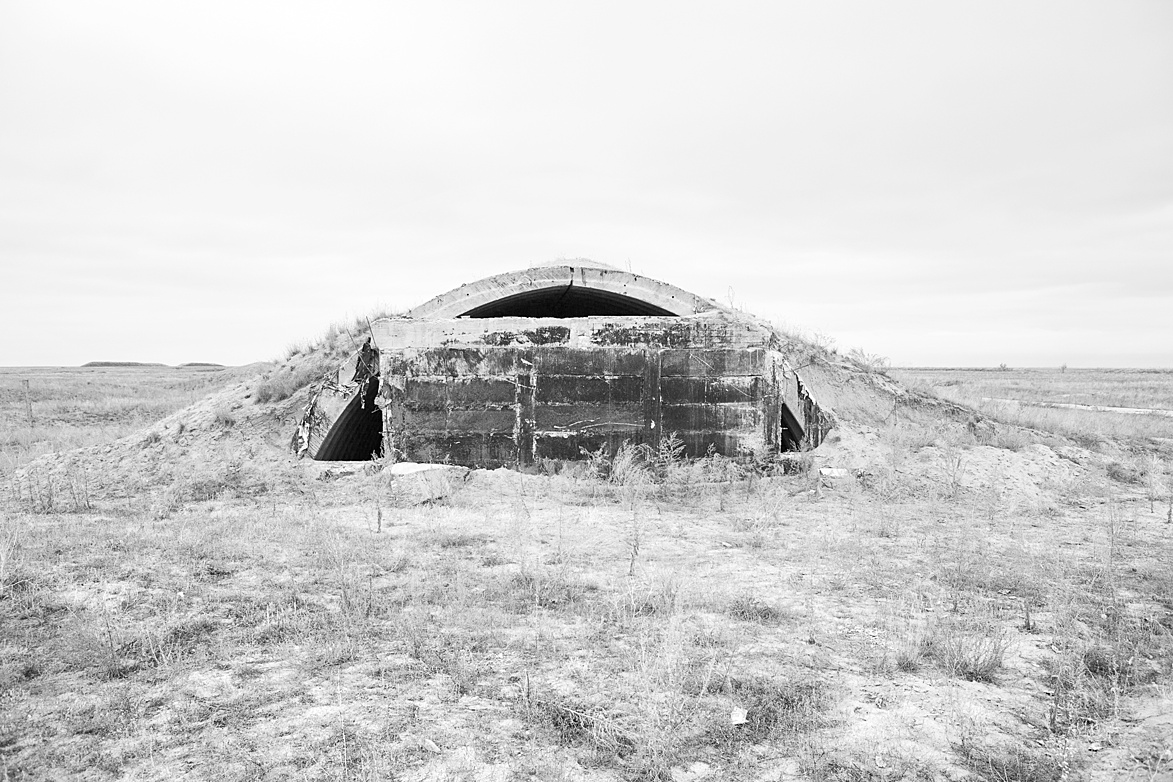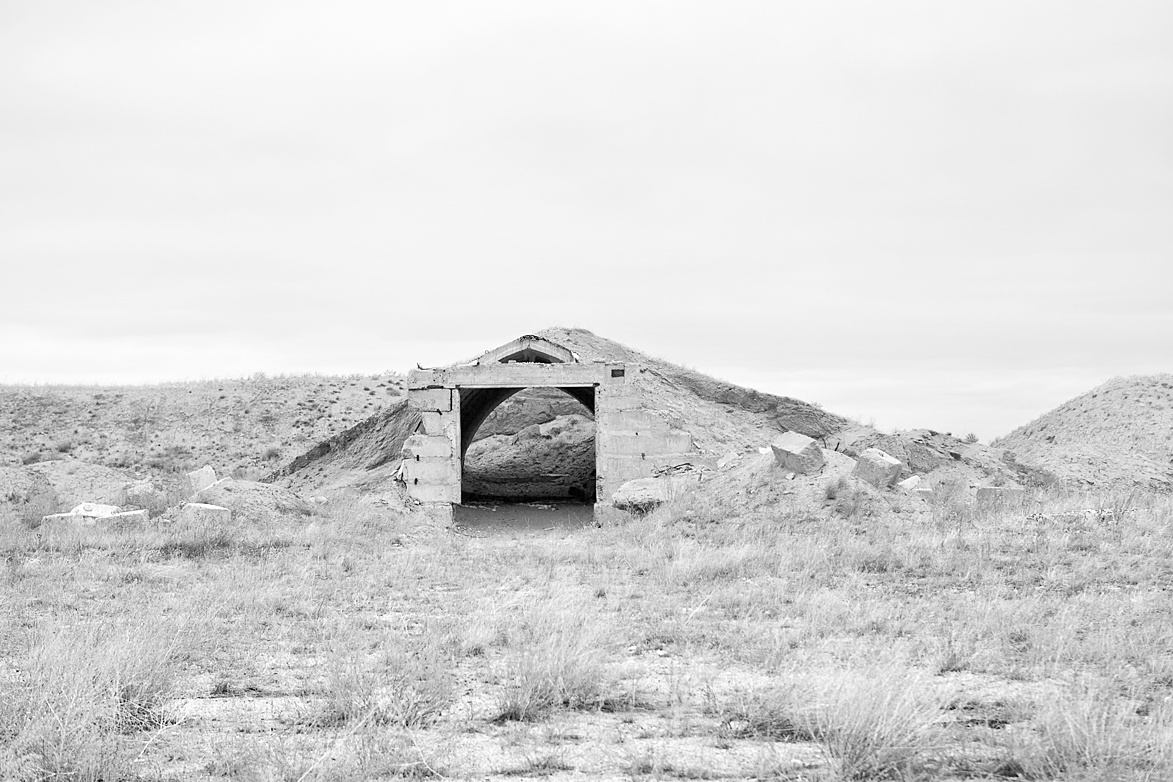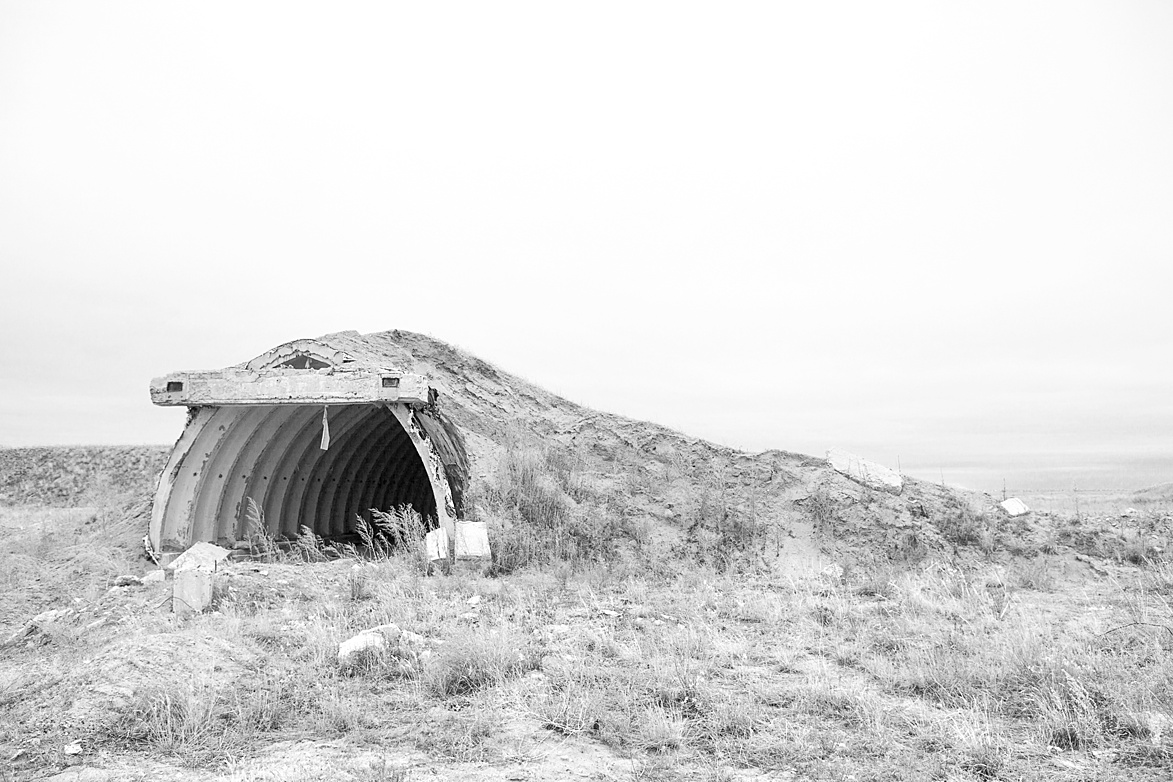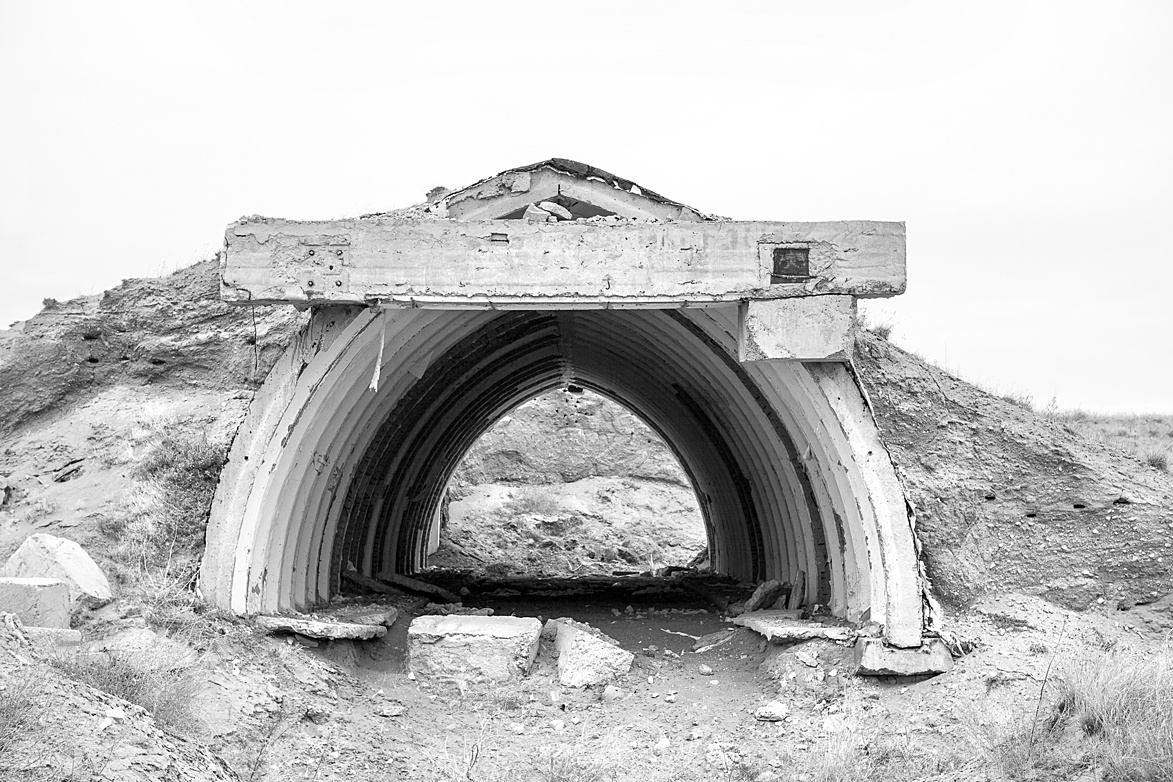OPYTNOE POLE
CHAGAN
Kazachstan, 2012

Julian Heynen: Once again we see a site and buildings that are leftovers, albeit very different, from the Soviet Union. Yet, oddly enough, these pictures also remind me of your photographs from Mesopotamia. Do you known anything about the original function of these buildings ?
Ursula Schulz-Dornburg: The buildings you see in these images were specifically designed to be exposed to nuclear explosions so that scientists could measure the destructive impact of their latest armaments. They were built in 1949, four years after Hiroshima, when the Soviet Union was testing its first atomic bombs. Between then and 1963 there were 124 atmospheric nuclear weapons tests; after that another 350 nuclear devices were detonated under ground.
In 1991 the Russians left.
Since the dissolution of the Soviet Union these facilities have been heavily plundered, leaving only the naked structures. So these buildings, standing around in that highly polluted, radioactive landscape, have taken on that surreal look and exude a unique potency of their own.
Here, too, where massive destruction seems to have created a zone ‘without time’, there are of course still layers of time that should not be forgotten by anyone visiting that site or contemplating the images. In my most pessimistic moments it seems to me that this is what our world could look like one day to someone gazing back at it.
JH: Yet these structures also create the impression that they could well still be standing in this bleak landscape in 500 or 1000 years — which would make them into future relatives of the ziggurats in Mesopotamia.
USD: I hadn’t thought of them like that, but it seems the way I photograph things does encourage that kind of comparison.
JH: It’s not just because of the large, upright structures, but also because of the look of the terrain, with the tiny traces and imprints
of time on and in it.
USD: Yes, and in that sense the scattered wires, broken cement blocks and indistinct markings in the grass at Opytnoe Pole do have something in common with the shards and windswept excavation sites in Mesopotamia.
‘The Verticals of Time’: excerpts from conversations between Ursula Schulz-Dornburg and Julian Heynen in December 2017 and January 2018.
